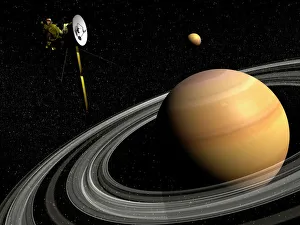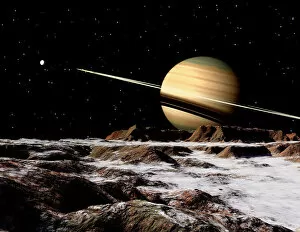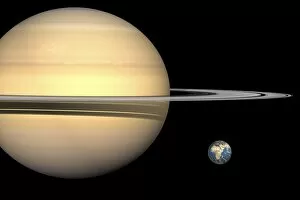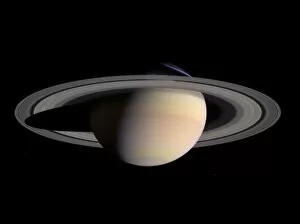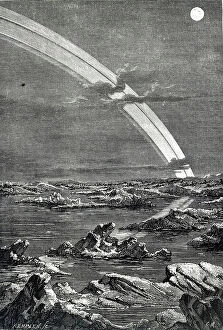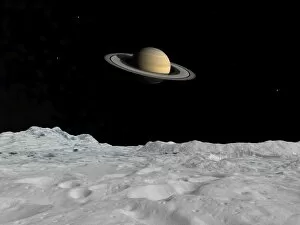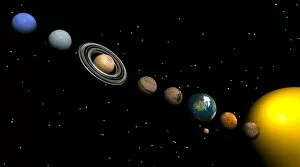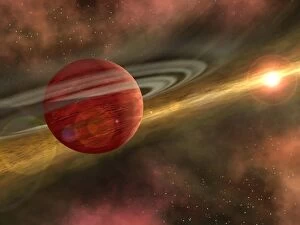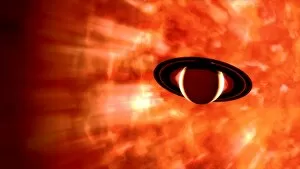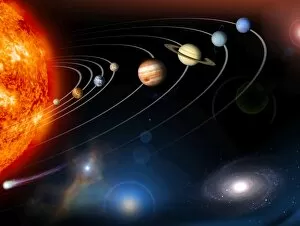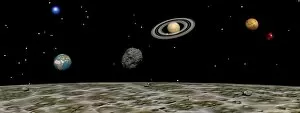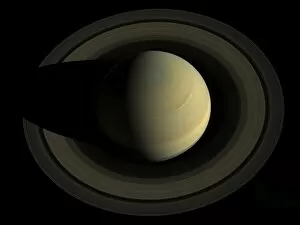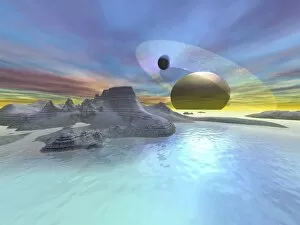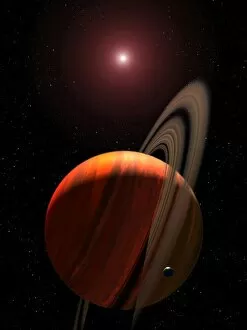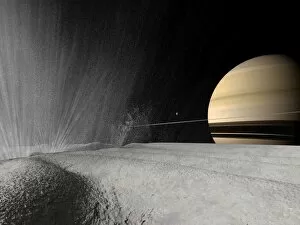Rings Of Saturn Collection
"Exploring the Enigmatic Rings of Saturn: A Journey through the Solar System" As the Cassini spacecraft gracefully orbits Saturn and its moon Titan
All Professionally Made to Order for Quick Shipping
"Exploring the Enigmatic Rings of Saturn: A Journey through the Solar System" As the Cassini spacecraft gracefully orbits Saturn and its moon Titan, it unveils a mesmerizing spectacle. From this unique vantage point, we witness Saturn's majestic presence against the backdrop of space. Imagine standing on Rhea's surface and gazing up at this colossal gas giant, an awe-inspiring sight that dwarfs our own Earth. In an illustration to scale, we comprehend just how vast Saturn is compared to our home planet within the solar system. Its sheer size leaves us humbled by nature's grandeur. But what truly captivates us are those magnificent rings encircling Saturn like celestial jewelry. While exploring further into this cosmic wonderland, we stumble upon another intriguing phenomenon - a ring of debris surrounding Rhea, Saturn's second-largest moon. This discovery raises questions about its origin and adds yet another layer of mystery to these enigmatic rings. Venturing even deeper into space exploration, geysers erupting from Enceladus reveal cryovolcanism near its South Pole – a reminder that other worlds in our solar system harbor secrets waiting to be unraveled. But amidst all these scientific marvels lies a tantalizing possibility: could there be a world out there with an environment similar to Earth? An astronaut embarks on an extraordinary journey and stumbles upon such a place – a revelation that ignites our imagination about life beyond our own blue planet. As if painting the sky with vibrant hues, cherry-red auroras dance above Saturn's south pole. These ethereal lights add yet another dimension of beauty to this already breathtaking scene. The rings of Saturn continue to fascinate scientists and stargazers alike as they symbolize both mystery and elegance in equal measure. They remind us that within the vastness of space lie wonders beyond comprehension – captivating remnants from ancient times when planets were born.

